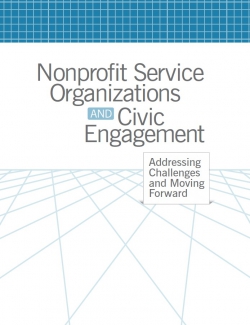Nonprofit Service Organizations and Civic Engagement
Nonprofit service organizations in the U.S. have contact with millions of people in need each year. As a result, local communities often view them as places where the neglected and forgotten can receive critical services.
In March 2007, there was a national convening on how nonprofit service organizations can support client and constituent civic involvement. The meeting was planned by the Alliance for Children and Families, Building Movement Project, Carnegie Corporation, Minnesota Council of Nonprofits, National Voter Engagement Network and the Rockefeller Brothers Fund. Each organization had an interest in promoting constituent participation in community civic life. The six conveners, along with others around the U.S., have been exploring how different forms of civic engagement can be integrated into the work of the nonprofit sector, especially among those groups providing services.
There are several reasons why service providers play an important role in civic engagement:
- Services groups have a substantial reach into low-income and other marginalized communities, especially with constituents who are left out of civic participation.
- The nonprofit sector comprises 10 percent of the nation’s workforce. Eighty-five percent of nonprofit organizations work in health care, education or human services. These organizations have an extensive infrastructure and base that can be mobilized in their communities and beyond.
- Nonprofit groups are mission-driven; they care about the people they serve. Their connection to constituents allows them to have a powerful role in building democracy.
This report describes what took place during the convening. The program began with presentations of three different approaches to how service providers integrate civic engagement into their work. Following the presentation of these case studies, there was a discussion of both the levers for successful work and the barriers to implementation. Participants then focused on the key obstacles to civic engagement activities ranging from fear of change to the need for identifiable outcomes. The next day, they took six key barriers and worked in small groups to identify solutions. The meeting ended with participants making individual commitments to actions that would promote service organizations as sites of civic engagement. The group as a whole selected three areas to work on together in the coming year.
(© 2007)

